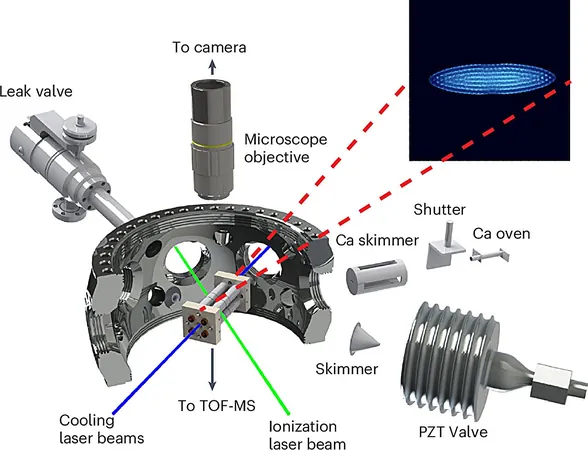
Groundbreaking Experiment Debunks Long-Held Theories About Interstellar Benzene Formation!
2025-03-28
Author: Sarah
Astrophysicists at the University of Colorado's JILA Make Significant Discovery
Astrophysicists at the University of Colorado's JILA, in collaboration with the National Institute of Science and Technology, have recently made waves in the field of astrochemistry by revealing that established theories regarding the formation of benzene in interstellar space may be fundamentally flawed.
The Importance of Benzene in Space Chemistry
This groundbreaking research, conducted by scientists G. S. Kocheril, C. Zagorec-Marks, and H. J. Lewandowski, is detailed in a publication in the prestigious journal Nature Astronomy.
For decades, scientists have proposed that ion-molecule collisions facilitate the formation of benzene in the vastness of space. This assumption is crucial, as benzene is believed to be a key building block for polycyclic aromatic hydrocarbons (PAHs), compounds that are significant for the cosmic carbon cycle and potentially vital for the emergence of carbon-based lifeforms.
Challenges in Confirming Theories
Despite the significance of these theories, prior attempts to experimentally confirm them faced substantial challenges due to the unique and extreme conditions present in interstellar environments.
Recreating Interstellar Conditions in the Laboratory
However, the JILA team utilized advanced equipment to recreate these conditions in their laboratory, setting the stage for this pivotal experiment.
Their procedure involved monitoring intricate molecular reactions under conditions that simulate interstellar space—one trillionth of the sea-level pressure and a chilling temperature of just 1 K.
By mixing neutral acetylene with a robust proton donor (N2H+), they meticulously tracked the reactions using a mass spectrometer.
Unexpected Results
Initially, the proton donation produced a positive ion (C6H5+), aligning with theoretical expectations.
Yet, when the researchers introduced hydrogen gas (H2) to facilitate the expected transformation into benzene, the anticipated reaction failed to materialize.
This lack of benzene production signifies a potential halt in the process of creating the first aromatic rings, casting doubt on the entire framework that underpins the synthesis of PAHs.
Reassessing Theories of Benzene Formation
These unexpected outcomes have prompted the research team to reassess how benzene might be produced in the cosmos.
They are considering revisiting previous hypotheses, including prior research from 2011 at the University of Hawaii, which suggested that neutral ethynyl radicals might interact with neutral 1,3-butadiene to form benzene under interstellar conditions.
Implications for Cosmic Chemistry and Life
The implications of this research stretch far beyond chemistry; it may reshape our understanding of cosmic chemistry and the origins of life itself.
Future Investigations
As scientists gear up for future investigations, the quest to uncover the mysteries of interstellar matter continues, leaving us to wonder what other secrets the universe might hold!
Conclusion
Stay tuned as this exciting saga unfolds! Will researchers finally crack the code to the formation of benzene in the depths of space? Only time will tell!


 Brasil (PT)
Brasil (PT)
 Canada (EN)
Canada (EN)
 Chile (ES)
Chile (ES)
 Česko (CS)
Česko (CS)
 대한민국 (KO)
대한민국 (KO)
 España (ES)
España (ES)
 France (FR)
France (FR)
 Hong Kong (EN)
Hong Kong (EN)
 Italia (IT)
Italia (IT)
 日本 (JA)
日本 (JA)
 Magyarország (HU)
Magyarország (HU)
 Norge (NO)
Norge (NO)
 Polska (PL)
Polska (PL)
 Schweiz (DE)
Schweiz (DE)
 Singapore (EN)
Singapore (EN)
 Sverige (SV)
Sverige (SV)
 Suomi (FI)
Suomi (FI)
 Türkiye (TR)
Türkiye (TR)
 الإمارات العربية المتحدة (AR)
الإمارات العربية المتحدة (AR)